Day 2 – Australia/New Zealand Adventure – Sydney Tour
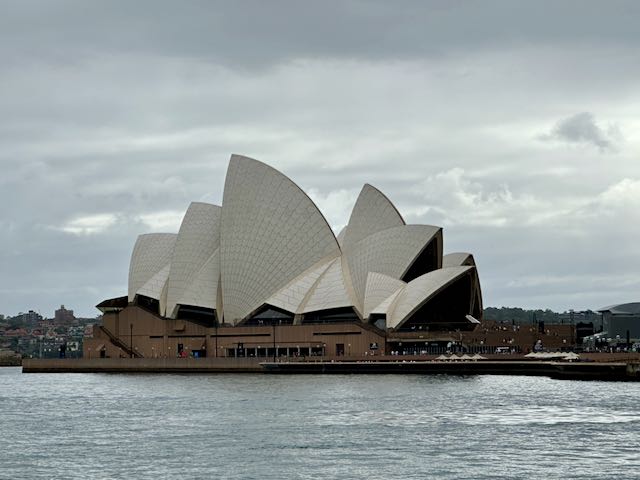
(March 8, 2025) – by Ann Silverthorn with Jim DeDad
We enjoyed a delicious hotel breakfast at 7:00 a.m. and then met our group at 8:00 a.m. to take the coach down to Sydney Harbour (which we walked to yesterday).
Cam was a great narrator on the coach and shared volumes of information with us, such as the fact that there are 5.2 million people living in Sydney and around the same in Melbourne. Sydney has more of an international flavor and Melbourne is more European.
First stop was “The Rocks” where the convicts from the United Kingdom landed after being banished to Australia. In 1798, 11 boats from Portsmouth brought 700 convicts. Any one of 19 crimes could get a person sent down under. Unfortunately, the second fleet to arrive had many prisoners dead on arrival, and the supplies they were supposed to bring were mostly gone.
In The Rocks, there was something called the “six o’clock swill,” because drinkers rushed to pubs to make it before closing time, an early hour meant to curtail over drinking. Also, exterior tiles were often installed on the pubs’ exteriors to prevent erosion from people who couldn’t wait until they got home to relieve themselves.
Cam told us that “150 Lashes” is a popular pale ale named for the convicts’ typical punishment. Jim had one, and he said it was pretty good.
We observed that the Sydney is very congested with many high rises, reminding us of New York City. There are all the high-end stores you can think of, many with young men dressed in black suits posted at the entrances. I mused at what their ultimate career aspirations might be.
Our coach drove past a beautiful old building named after Queen Victoria that had been scheduled for demolition but was instead renovated and now houses high-end shops. We made a note to find ourselves there during free time.
Sydney Harbour Bridge was constructed from 1920-1932 and modeled on the design of Hell Gate Bridge in New York City. Called the “The Iron Lung,” it gave life to unemployed workers during the Great Depression. Amazingly, for around $300 Australian, you can walk across the very top of the bridge. . . A few members of our group did.
After our coach tour, we met up with Margaret, an Aboriginal tour guide from the Gadigal clan, who shared the rich history and culture of her people with us. Aborigines have clans rather than tribes, like our Native Americans do. Margaret told us there are 72 natural “primary colors” in the aboriginal flag. Also, the aboriginal people got the vote in Australia in 1965, but Margaret said they still don’t have an adequate political voice.
Sydney Opera House (The People’s House)
The Sydney Opera House sits on land that the indigenous Gadigal clan call Tubowgule. The British called it Bennelong Point. Our guide was Imi (Imogene). She said funny things like “bits and bobs” and “haytch” rather than “aytch” for the letter H).
We learned that the opera house is UNESCO world heritage site, that ribs give it strength rather than columns, and that it was opened in1973 by Queen Elizabeth II.
The opera house has six individual theatres, which host 2,000 performances per year. The smallest was performed by the Chamber Pot Performers in a ladies’ room!
Imi shared a dramatic story about the architects who designed the Sydney Opera House. Several years into the project, the man who designed the exterior, Jorn Utson, was forced out, possibly because of cost overruns. A second man, Peter Hall, was brought in to design most of the interior. Thirty years after Utson had been forced out, he was asked to return and participate in an anniversary celebration. By that time he was quite elderly, so he didn’t come back, but he put together a detailed maintenance document, and today the Sydney Opera house uses it and works with Utson’s son, also an architect to preserve the building.
Studio Theatre in the Opera House
The Studio Theatre is an experimental space, which was originally designed to be an elevator for stage sets and then a rehearsal hall. The present production is based on Dungeons and Dragons, and audience participation is achieved with QR codes. It can also be a theatre in the round.
Sydney Opera House Concert Hall
The main concert hall has capacity for 2,600 audience members. It has one of the largest pipe organs in the world. The hall has hosted symphonies, rock concerts, comedy performances, dance productions, and even a raucous boxing match in the 1980s.
I should mention that all along the walkways on Sydney Harbour and Circular Quay are round brass plates commemorating writers. The New South Wales Ministry for the Arts sponsored this writers walk.
After the opera-house tour, we hopped back on the coach and visited an opal museum, home of the National Opal Collection. We listened to a talk about how opals are formed and mined and also watched a video. We learned that opals are actually just reconstituted sandstone!
On our own for dinner, we ended up at Tilda, a restaurant in the hotel, after getting confused about what we wanted to eat and where and being very tired. Plenty of time to rest in the morning, because we have the day free until 4:30 p.m.
10,880 steps

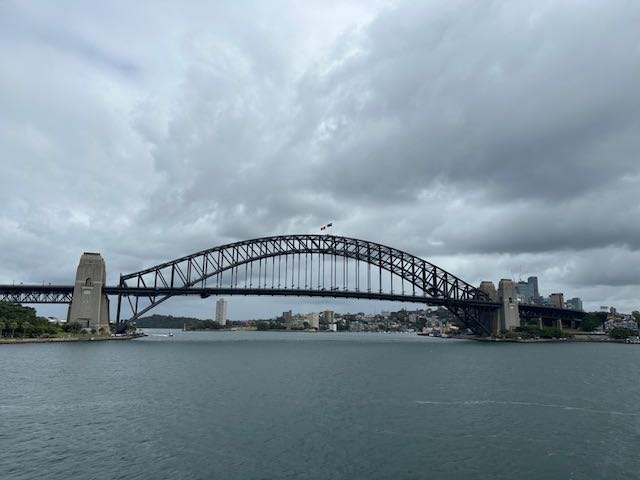
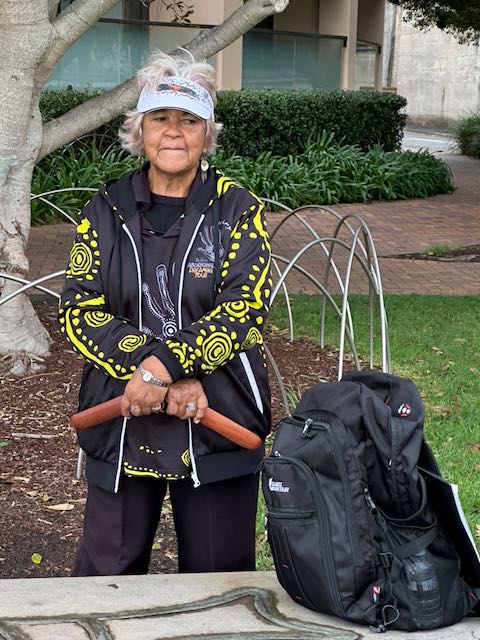

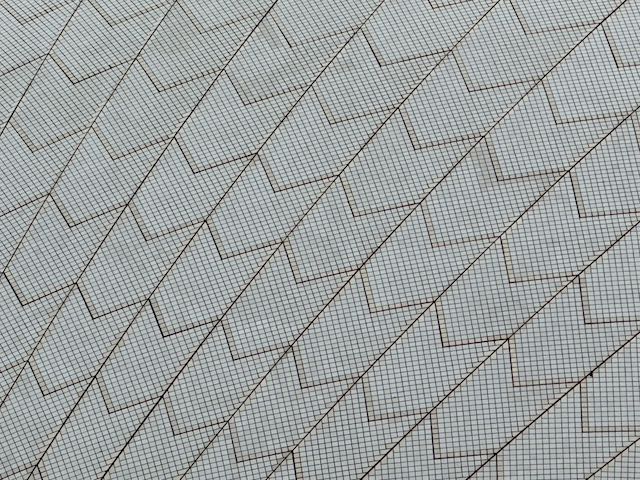
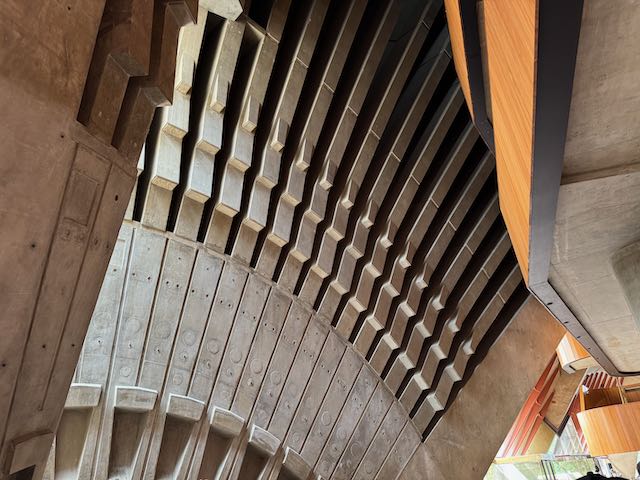
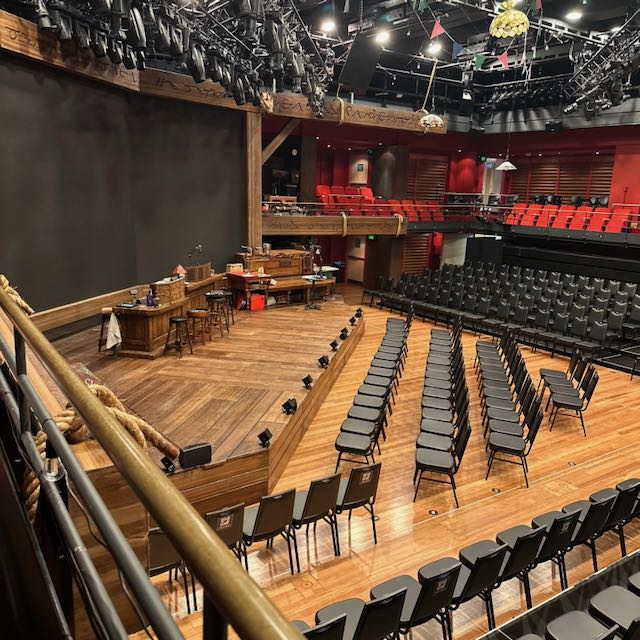
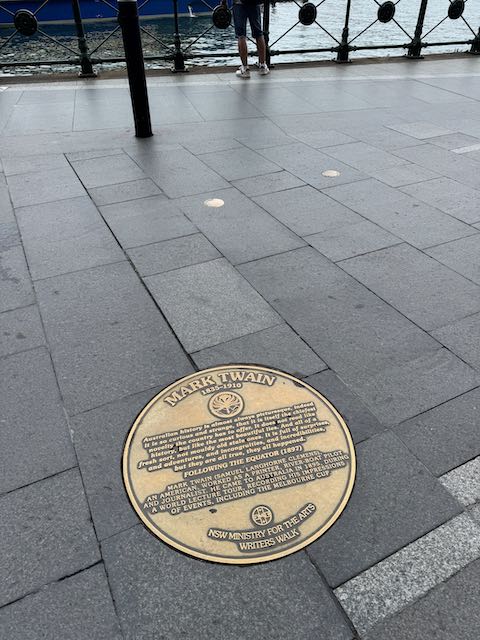
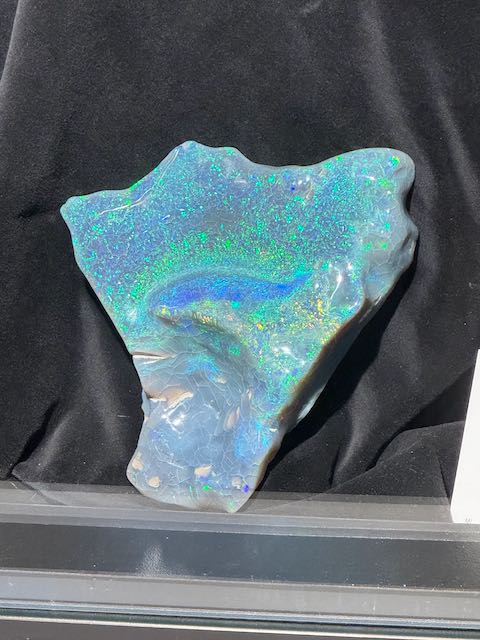



I love Day 2! Thank you for sharing the photos inside the Sydney Opera House. That was an interesting story about Jorn Utson. I hope you purchased an opal in Australia–I would have loved that museum.
I already have the nice black opal that Jim brought back in the 90’s, but I would have liked to find some earrings.